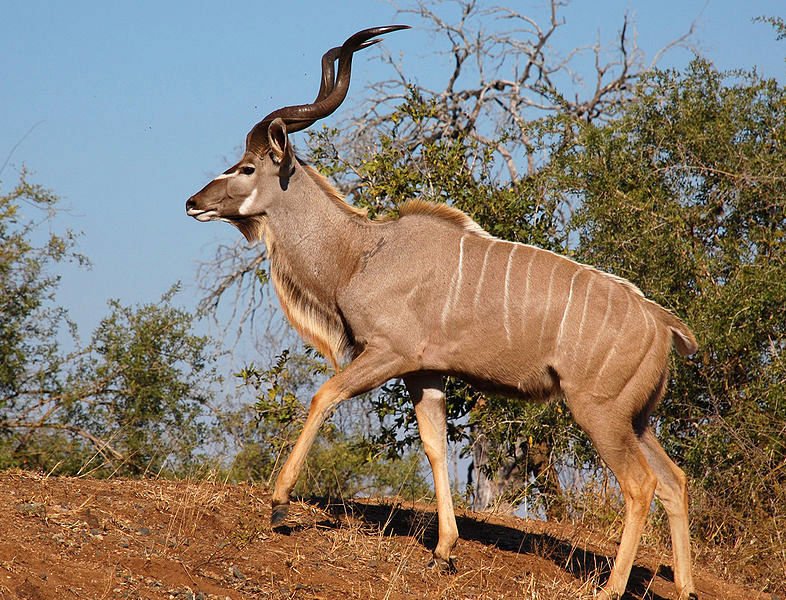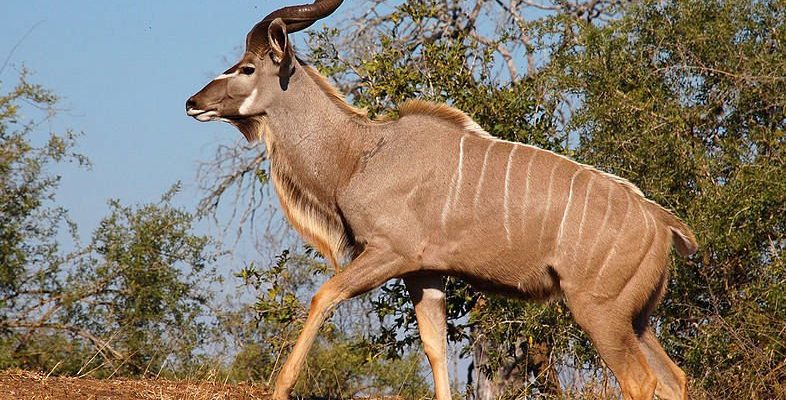
Kudus are generally shy and tend to avoid human contact, preferring to blend into their surroundings. However, if you’re out exploring and come across a kudu, knowing what to do can make the experience both safe and enjoyable. Here’s a friendly guide on how to handle such a thrilling encounter, from keeping your distance to understanding their behavior.
Understanding Kudu Behavior
Kudus are large, graceful antelopes native to Africa. Males can weigh up to 600 pounds and stand about four feet tall at the shoulder, while females are slightly smaller. You might be wondering why their behavior matters. Well, understanding how these animals act can help you stay safe and ensure a respectful interaction.
Kudus are herbivores, mostly grazing on leaves, shrubs, and fruit. They thrive in woodland areas and are known for their calm demeanor. However, if they feel threatened, they can become startled and flee. Imagine someone jumping out at you unexpectedly—it’s a natural response! Their first instinct is to run, and they can leap up to six feet high to escape danger.
Being aware of their body language is essential. If a kudu looks directly at you but remains still, it may be assessing the situation. If it lowers its head and flares its nostrils, that could indicate nervousness. That’s your cue to give it space.
Keep Your Distance
One of the most important rules when encountering wildlife, including kudus, is to maintain a safe distance. Kudus might seem calm, but they’re still wild animals, and getting too close can be dangerous for both you and the animal.
A good rule of thumb is to stay at least 100 meters away. This distance allows you to enjoy watching them without causing stress. Plus, it gives you enough space in case they decide to bolt. If you can see the kudu clearly but still feel like you’re respectful of its personal space, you’re doing it right!
If you’re in a vehicle, keep the windows up and avoid any sudden movements. Animals are often more relaxed when they feel they have an escape route. So, give them that space and watch the beauty of nature unfold.
What to Do If a Kudu Approaches You
Sometimes, despite your best efforts, a kudu might wander closer. It can be an exhilarating experience, but remember, safety comes first. If a kudu approaches, here’s what you should do:
- Stay Calm: Kudus can sense anxiety. If you remain still and calm, it may feel safe enough to continue on its way.
- Do Not Feed: While it might be tempting to offer food, never feed wild animals. It can change their natural behavior and make them reliant on humans.
- Make Your Presence Known: If the kudu gets too close for comfort, you can gently clap your hands or make a soft noise to encourage it to retreat.
By respecting their space and responding calmly, you’ll create a peaceful interaction. Wildlife encounters can be magical, and it’s essential to cherish these moments while keeping both you and the animal safe.
Where to Spot Kudus
If you’re planning a trip to see kudus, knowing where to look can enhance your chances. They typically inhabit wooded and open areas, often near water sources. Here are some of the best places to spot them:
- National Parks: Parks like Kruger in South Africa and Etosha in Namibia are excellent for seeing kudus in their natural habitat.
- Private Reserves: Many private lodges offer game drives specifically targeting wildlife spotting, including kudus.
- Bushveld Areas: This term refers to the scrub and woodland ecosystems where kudus thrive.
Plan your trip during the early morning or late afternoon when kudus are most active. You might even catch them gracefully moving through the trees.
Safety Tips for Wildlife Encounters
When spending time in nature, it’s crucial to be prepared for any wildlife encounters—not just with kudus but with other animals as well. Here are some essential safety tips to keep your adventures enjoyable:
- Stay On Trails: Wander off the beaten path, and you may accidentally surprise wildlife. Stick to designated paths for your safety.
- Travel in Groups: It’s always better to explore with others. A group is less likely to be approached by wild animals.
- Be Informed: Learn about the wildlife you might encounter in the area. Knowledge is power—especially when it comes to safety!
These straightforward precautions can make your experience in the wild safer, more enjoyable, and, ultimately, unforgettable.
The Significance of Kudus in Their Ecosystem
Kudus are not just beautiful creatures; they play a vital role in their ecosystem. By grazing on plants, they help manage the growth of vegetation, promoting a healthy balance. This process benefits other animals and plants in the area.
Additionally, kudus are a food source for predators like lions and leopards. Their presence in the food chain is crucial for maintaining the health of the ecosystem. When you encounter a kudu, know that you’re witnessing a part of a complex web of life that supports many other species.
Enjoy the Experience
Finally, remember that encountering a kudu or any wildlife is a chance to connect with nature. Try to soak in the moment and appreciate the beauty around you. You might even take a slow, deep breath and let the experience wash over you.
Wildlife encounters are unique, and every moment spent in nature brings a sense of adventure. Whether it’s seeing a kudu leap gracefully or listening to the sounds of the African bush, let that wonder stay with you long after you leave.
In conclusion, if you ever find yourself face-to-face with a kudu in the wild, just remember these guidelines. Keep your distance, stay calm, and respect their space. By doing so, you’ll ensure both your safety and that of these incredible animals. Happy exploring!

